What Is a Poblano Pepper?
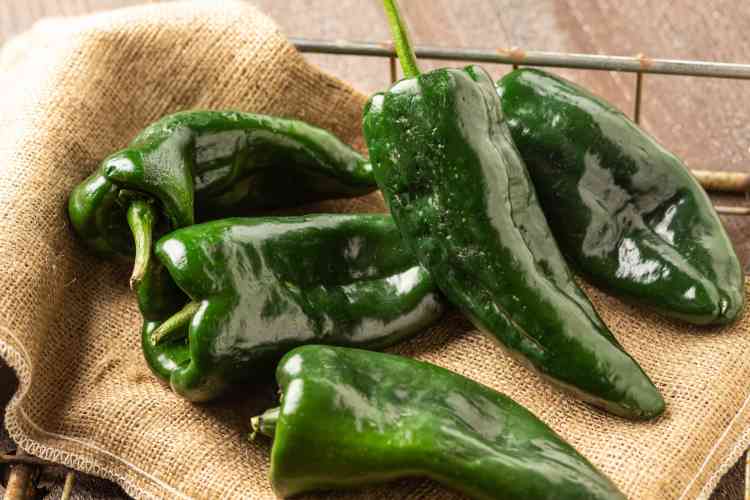
You found a delicious-looking recipe online, but it calls for an unfamiliar ingredient: poblano peppers. You’ve never seen them before. They look kind of like large jalapeños, but are they spicy? What is a poblano pepper anyway?
Don’t worry, new ingredients are (literally) the spice of life, and poblano peppers are nothing to worry about. Read on to discover more about these versatile peppers so you can start using them with confidence.
Jump to Section
What Are Poblano Peppers?
So what is a poblano chile pepper exactly? A poblano pepper is a type of pepper that’s native to Mexico. These peppers are named after the Mexican state of Puebla, which is where they’re commonly grown. Poblano peppers are known for their relatively low heat level (we’ll discuss that more later), which makes them popular in Mexican cuisine even amongst people who don’t love high levels of spice.
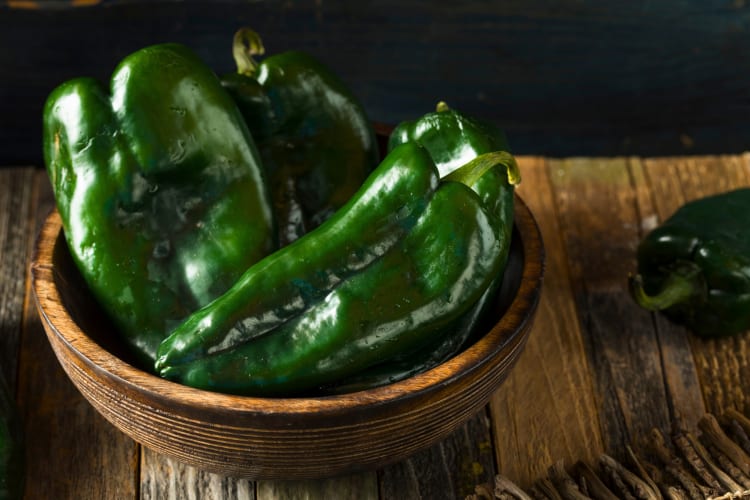
What Does a Poblano Pepper Look Like?
In their normal state, poblano peppers almost resemble smaller and flatter bell peppers. They’re usually dark green in color and roughly palm-sized, though this can vary. As with any type of produce, you can often find these peppers in a variety of shapes and sizes, but most of them have a distinctive (and cute) heart-shaped appearance and a wide base that tapers to a gently pointed tip.
When they’re fully grown, they generally measure around four to six inches in length and two to three inches in width. Their skin is smooth and can sometimes appear almost waxy when uncooked. When they’re cooked, the skin darkens.
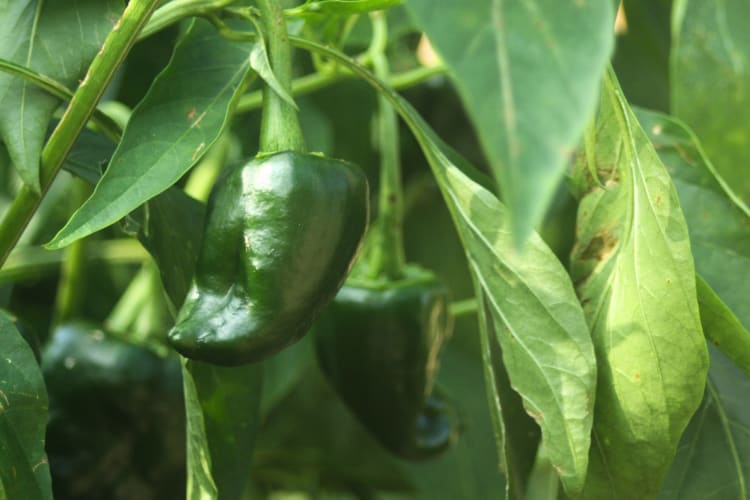
What Does a Poblano Pepper Taste Like?
If you’re interested in a pepper that isn’t all spice, a poblano might be a good option for you. Poblano peppers have a unique flavor profile that could be described as earthy, rich and even slightly sweet. They have a mild to medium level of spiciness depending on your spice tolerance and the growing conditions that the peppers were exposed to.
Poblano peppers also have notes that are somewhat vegetal and grassy, almost reminiscent of bell peppers but with a bit more depth and complexity. This vegetal flavor adds freshness and vibrancy to dishes and complements a wide range of ingredients.
Poblanos aren’t often eaten raw like some other peppers as their earthy and vegetal taste may be more pronounced in the pepper’s raw form. They additionally don’t have the same sharp bite as some spicier peppers do, such as habaneros or jalapeños.
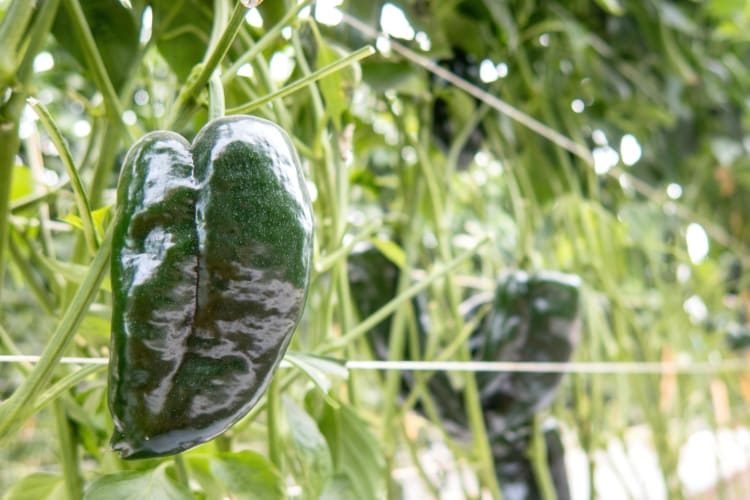
Poblano vs. Anaheim Pepper
Let’s compare two common peppers: poblanos and Anaheims. They’re both mild peppers that are often used in Mexican food, but they have some differences in flavor, heat level and appearance.
First, poblano peppers tend to be milder than Anaheim peppers. However, Anaheims aren’t that spicy either. Anaheim peppers top out at around 2,500 units on the Scoville scale while poblano peppers reach about 2,000 units. The difference is small, but if someone is sensitive to heat, it may be significant. Anaheim peppers also tend to be grassier and less sweet than poblano peppers.
In terms of appearance, there are some differences as well. An Anaheim pepper is long, narrow and curved instead of heart-shaped like poblanos. They also don’t have the same dark green color. Anaheim peppers are light to medium green while they’re growing and turn red once they’re ripe and ready to eat.
One primary similarity is that they’re both used in a wide variety of dishes and are even sometimes used interchangeably due to their similar flavor profiles.
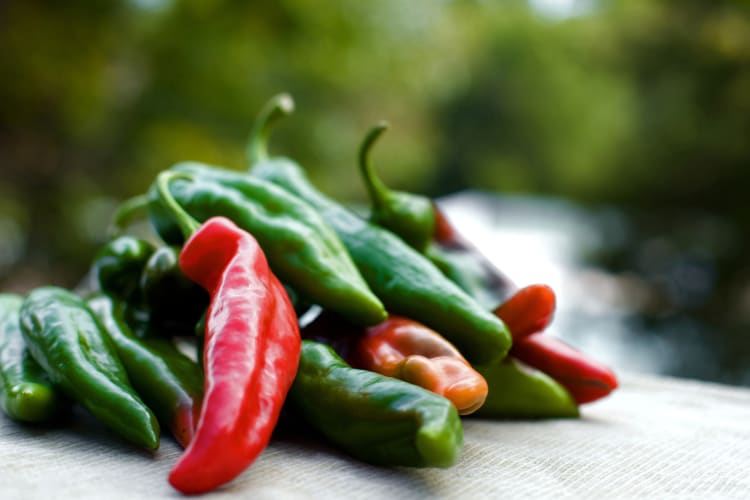
Poblano vs. Jalapeño
Now let’s compare two far less similar peppers (though, in appearance, they may look similar). What is a poblano pepper in comparison to a jalapeño pepper? Again, they’re both popular peppers used in Mexican cuisine, but their flavor profiles are quite different and they’re not interchangeable in most cases unless you’re trying to change the heat level of a recipe.
Poblano peppers are milder than jalapeño peppers. As we’ve established, poblanos tend to top out around 2,000 heat units on the Scoville scale. On the other hand, jalapeño peppers can range from 2,500 to 8,000 heat units, which means that the mildest jalapeño is comparable to the spiciest poblano. Otherwise, jalapeño peppers are sharp and tangy while poblanos are more mild and earthy.
Like poblano peppers, jalapeños are dark green in color when they’re ripe and ready to eat. However, they’re smaller than poblanos and they are thin and curved rather than heart-shaped.
While you could stuff jalapeño peppers like you would poblanos, it’s atypical and not normally how these peppers are prepared. However, both peppers are common in sauces, salsas, soups and other dishes in which they’re minced or puréed.
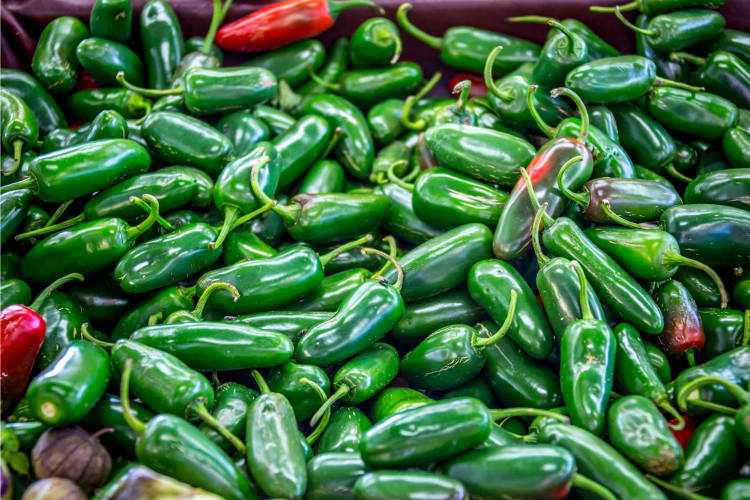
Are Poblano Peppers Hot?
We’ve mentioned the Scoville scale before, but what is it? The Scoville Heat Scale measures the heat level of chile peppers and goes as high as 2,200,000 heat units. Poblano peppers typically range from 1,000 to 2,000 Scoville Heat Units. In the world of peppers, this is considered quite mild. So is a poblano pepper hot? For most people, no, not really.
We already compared poblano peppers to mildly spicy jalapeño peppers which at their spiciest level can hit up to 8,000 heat units. To get a better picture of the heat level of poblano peppers, let's compare them with a few other kinds of peppers. Bell peppers are the mildest kind of peppers as they are a zero on the Scoville scale. Cayenne peppers, which are commonly used in powdered form, can hit up to 50,000 heat units on the Scoville scale. Tasty and fruity habanero peppers can reach over 350,000 heat units!
When it’s put in perspective like that, 1,000 to 2,000 heat units on the Scoville scale doesn’t seem that spicy, does it?
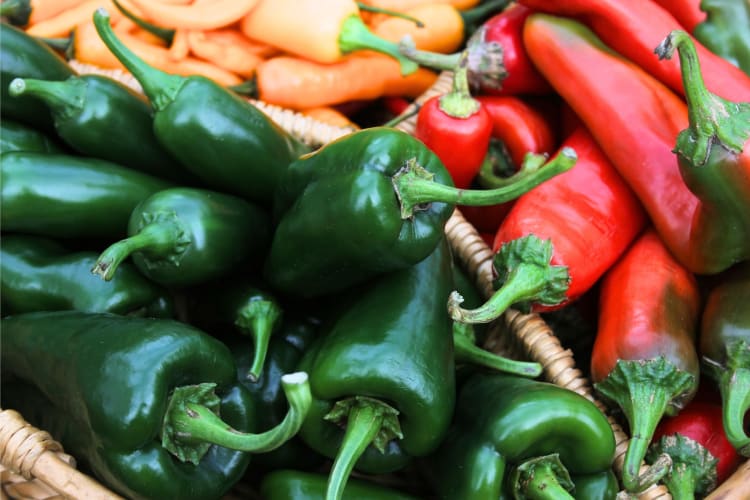
Poblano Pepper Recipes
Do you want to learn how to cook with poblanos? By taking cooking classes near you, you can learn how to make a variety of Mexican (or Mexican-inspired) dishes with this smoky little pepper. These classes are taught by top-rated chefs and you can even learn from your own kitchen with online cooking classes. But what can you cook with poblano peppers?
Poblano peppers are a versatile ingredient that can be used in a variety of recipes to add flavor, texture and a mild level of spice. You can chop them up to incorporate them into dishes or use them whole and stuff them. There are many things you can do with these peppers, but a few classic dishes rise above the rest.
Chile relleno is a classic and delicious Mexican dish that involves stuffing poblano peppers with cheese before battering and frying them until they’re golden and crispy. You can also stuff poblano peppers with a variety of other ingredients, like meat or beans, in place of bell peppers for a spicier and smokier stuffed pepper experience.
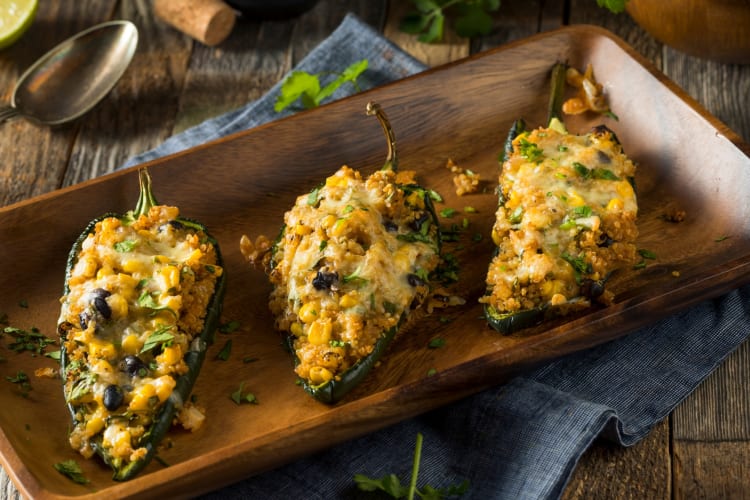
Poblano pepper soups and casseroles are also incredibly popular. The peppers cook down well and impart an earthy and smoky flavor to the dish. They also pair well with a variety of vegetables and proteins, making them fantastic for many types of diets.
Minced or puréed poblano peppers are perfect for salsa verde — which is used in dishes like enchiladas verdes — pico de gallo, chimichurri and a variety of marinades. These peppers pair well with onions, tomatoes and other peppers to make flavorful sauces for your favorite meals.
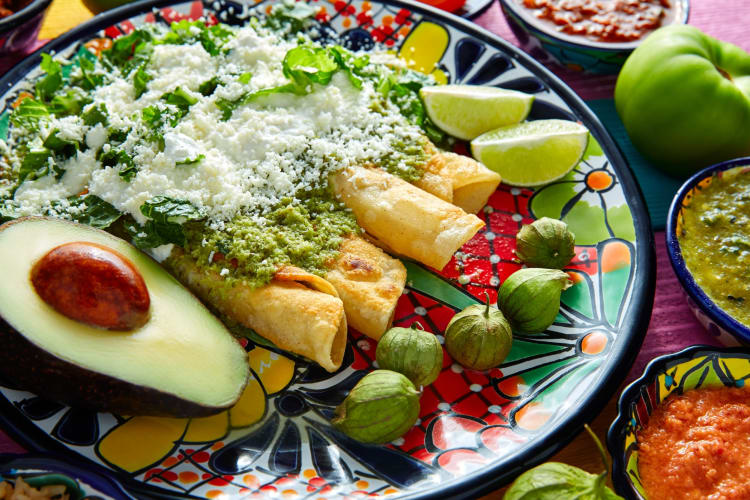
How To Cut a Poblano Pepper
Before you cook the pepper, you (generally) have to cut and deseed it. Don’t worry, it’s not hard.
Firstly, rinse the pepper under cold water to remove any dirt. Use a sharp knife to cut off the stem end of the pepper unless you want to keep it on while it’s cooking. Then, slice the pepper lengthwise from top to bottom, halving it.
You can use your fingers or a spoon to remove the seeds and membranes from the inside of the pepper. Rinse the pepper halves under cold water to wash away any remaining seeds. You can also remove the veins from the inside of the pepper if you want a milder flavor. Finally, slice, dice or chop the pepper according to your recipe's needs. This will vary depending on what you’re making.
While these peppers aren’t particularly hot, you still want to rinse your hands well before touching your eyes. The juices from the pepper could cause some discomfort.
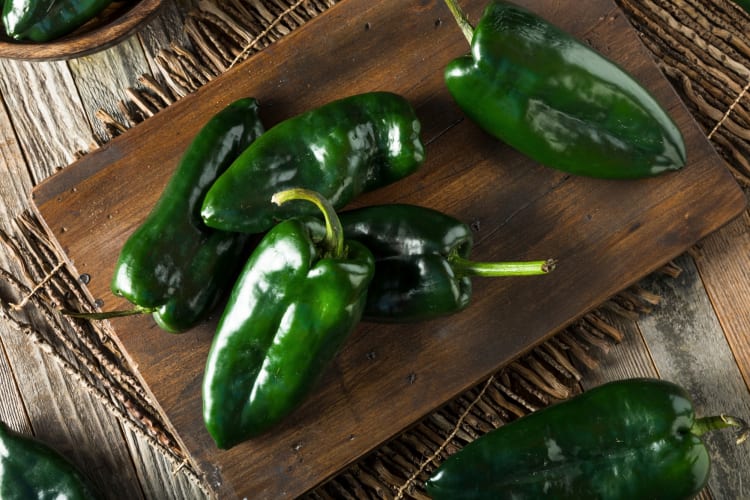
How Do I Roast a Poblano Pepper?
Roasting a pepper is a great way to get some fantastic flavor out of it. How do you roast a poblano? There are two main methods for making roasted poblano peppers. You can use the oven method or the grill method.
For the oven method, place your washed and dried poblano peppers on a baking sheet lined with aluminum foil or parchment paper. Arrange them in a single layer and make sure they’re not touching. Preheat the oven to a high broil setting.
Place the baking sheet on the top rack of the oven under the broiler. Roast the peppers for five to seven minutes until the skin is blistered and charred on all sides. Turn them occasionally with tongs to make sure they cook evenly.
For the grill method, place the washed and dried poblano peppers directly on the grill grates on medium-high heat. Again, grill the peppers for five to seven minutes, turning them occasionally with tongs. You may or may not want to peel the charred skin off of the pepper, but it’s quite easy once the poblano cools down.
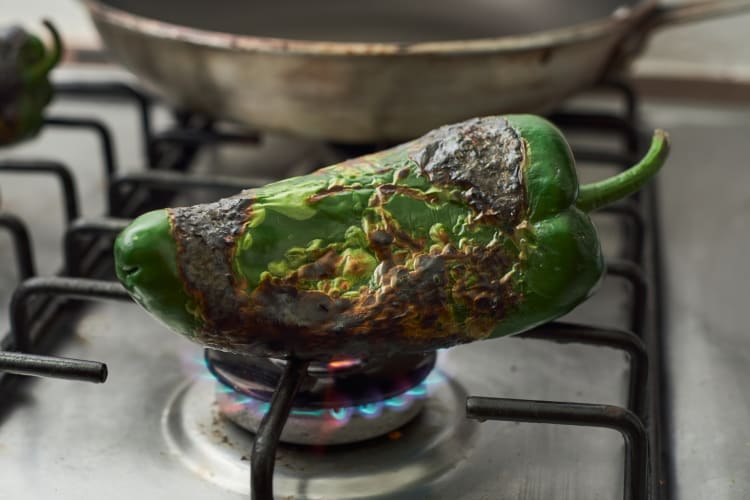
So now that you know almost everything there is to know about poblano peppers, are you ready to start using them? Experimenting with new ingredients in the kitchen is so much fun, and even if you’re not a spice lover, these versatile peppers are beginner-friendly and quite mild, so don’t be afraid to give them a try!
For even more ways to explore your favorite foods, check out other experiences happening on Cozymeal.



FOOD FOR THOUGHT?
Join the conversation.